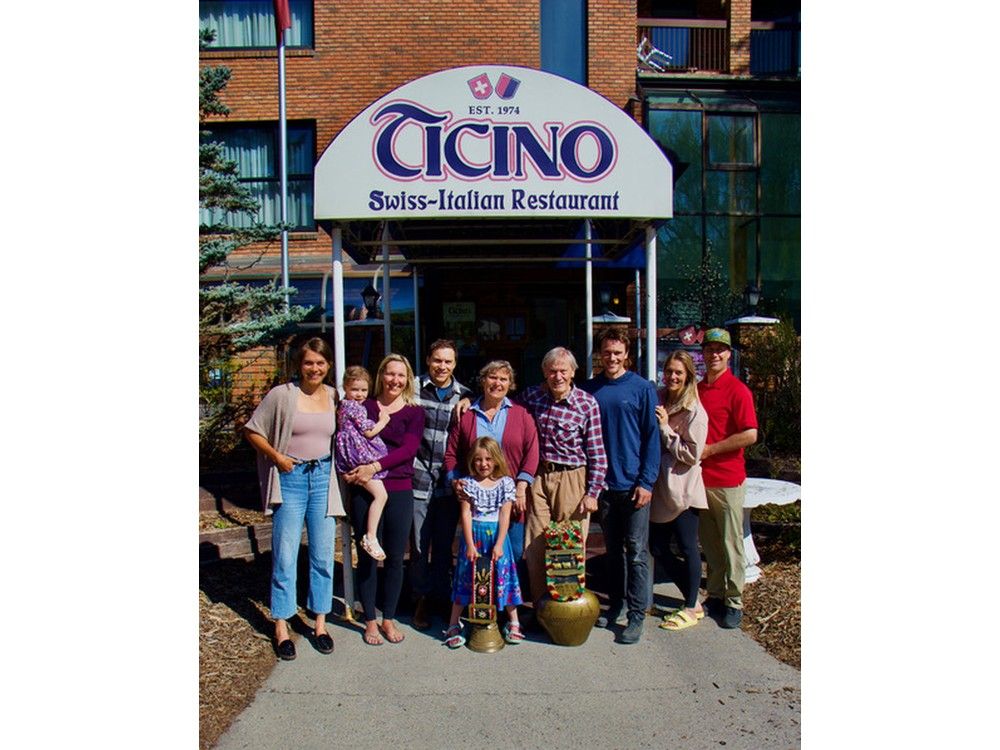What to know about the most popular vendors

Catherine Hu has led marketing initiatives on the global stage for Pepperidge Farm Goldfish and Hershey’s Kisses, but when it came time to starting up her own food business, Hu brought a bit of world cuisine back to her corner of Connecticut. Specifically, she brought it to a farmers market table not far from where she lives in the southwesternmost corner of the state, for neighbors wanting to try something new off the beaten culinary path.
Mama Hu’s Sushi Bake is now expanding in its second year, branching out from an initial season at the New Canaan Farmers Market, the Georgetown Farmers Market and the Rowayton Farmers Market. This year, Mama Hu’s will be at the Greenwich Farmers Market and the Nichols Farmers Market in Trumbull, and possibly down the road at the Westport Farmers Market if Mama Hu’s makes the cut.
If among the more singular dishes on the Connecticut farmers market circuit — sushi fixings and flavorings on a bed of rice to pop from the freezer into the oven — Mama Hu’s Sushi Bake is just one booth in a crowd of 1,100 vendors to appear at 100-plus summer farmers markets in Connecticut. Those vendors and farmers markets date back to the start of last year’s season as tracked by CT Insider via online lists and social media postings.
Factoring in vendors that attend multiple summer farmers markets, Connecticut households have access to at least 1,800 farmers market stands statewide at varying points in the season, the CT Insider analysis shows, with not all of them on hand every single week. The real number is likely even higher, with farmers markets having varying levels of diligence in posting participating vendors in any given week.
Some vendors are traditional farms providing fresh produce and proteins locally, even more are dishing up prepared or packaged foods, and others are “made in Connecticut” artisans looking to add new customers and visibility on top of their online stores and the summer festival and craft show circuits. CT Insider omitted a number of farmers market booths from its final count that include advocacy, youth and municipal groups; representatives of multi-level product marketing firms; booksellers; and companies providing residential services not linked directly to the kitchen and garden.
‘First thing that came to mind’
Hu is among the newer arrivals, having discovered the sushi bake concept during the COVID-19 pandemic as a way to keep a dish readily at hand that evokes the sushi rolls she and her daughter love. They began experimenting with recipes, and with her extensive experience in consumer packaged goods Hu saw the potential to create a sushi bake brand in Connecticut. She decided to test the concept at the New Canaan Farmers Market and got a welcome reception.
“A farmers market was the first thing that came to mind,” Hu told CT Insider. “I couldn’t get into the larger grocery stores yet — which is my goal with my background — but I needed something to start with. I feel farmers markets are an awesome channel for local farms, local businesses.”
It is an expanding channel as well, if the trends captured in a 2019 survey of farmers market managers nationally have stayed on an upward trajectory. Northeast markets reported an average of 600 customers each during peak season, according to surveys by the U.S. Department of Agriculture and Wheaton College.
But patronage can swing widely week to week and market to market, depending on the weather, the vendor mix, population density and the locale among other factors. There has been no follow-up USDA survey results to gauge sales since the start of the pandemic, with Connecticut among the states that broadened the pool of eligible shoppers by expanding food-assistance programs to farmers market purchases.
And some farmers markets offer their own promotions, including those affiliated with the Bridgeport Farmers Market Collaborative which accept “Bridgeport Bucks” vouchers sponsored by varying organizations at nine farmers markets, the most of any city in Connecticut.
“Customers who receive SNAP/EBT can have their benefits doubled at any BFMC-affiliated market to spend on fruit and vegetables,” stated Takina Pollock Shafer, director of the Bridgeport Farmers Market Collaborative, in an email response to CT Insider. “In 2022 through American Rescue Plan funds we introduced a matching program for recipients of WIC and Senior Farmers Market Nutrition Program benefits, and will continue this matching program in 2023.”
Breadbaskets of Connecticut
In her second season on the circuit, Hu is expanding production at a Wilson Avenue commercial kitchen in Norwalk to assemble, package and freeze Mama Hu’s Sushi Bake. She has plenty of company in Norwalk — the city has the highest concentration of Connecticut farmers market vendors among those with listed addresses, at more than two dozen there as reported by farmers markets statewide in the past year. That includes Wave Hill Breads, a commercial artisan bakery which led the circuit last year by making the rounds of nearly 20 Connecticut farmers markets, along with several more in New York.
Slightly edging Hartford and Bridgeport for the next biggest number of listed vendors was Colchester, with more than 20 vendors split evenly across farms, food makers and sellers of handcrafted artisan goods. It is an outsize share for a town with less than 5,200 people, with the Colchester Farmers Market run by Community Pollinator which also runs the East Haddam Farmers Market.
If Wave Hill Breads makes Norwalk the figurative breadbasket of Connecticut in the context of farmers markets — alongside other baked-goods vendors like SoNo Baking Co., Michele’s Pies and the gluten-free Stylish Spoon — Meriden might be the crafting capital, with a baker’s dozen artisan vendors there popping up on farmers market rosters in 2022 and through early May this year.
For dairy and cheese, Groton is tops by virtue of Mystic Cheese booths that pepper farmers markets in eastern Connecticut. Add in nearby North Stonington, and the dairy numbers are boosted further via the nonprofit Terra Firma Farm which also sells beef, pork and poultry in multiple farmers markets.
In addition to baked goods, Norwalk is out front in the larger prepared-foods category, with Mama Hu’s Sushi Bake among a dozen vendors there. Prepared foods is by far the biggest category at Connecticut farmers markets, adding up to roughly four of every 10 vendors in the CT Insider analysis or more than 400 in all, to include packaged-food startups, beverage makers, and food trucks and stands for immediate consumption.
With a number of produce farms setting up large displays at several markets during the summer months — the short list includes Gazy Brothers Farm in Oxford, Riverbank Farm in Roxbury and Smith’s Acres in Niantic — vegetable and fruit stands have a prominent perch at Connecticut farmers markets, offering a variety of produce at peak freshness as the season progresses through the corn harvest.
A significant percentage of farmers market vendors sell products across multiple categories, notably eggs and “value-added” items like jarred jams, spreads and sauces from fruit and vegetable farms. Eight farms in Glastonbury alone showed up at more than 30 farmers markets statewide in the past year, from Ashford to Danbury.
Kelly Plunkett believes food is the core mission for farmers markets in her role managing the Monroe Farmers Market, which was ranked among the top five in the United States last year by American Farmland Trust in a national survey of those who shop farmers markets. Also cracking the top 10 was the Nichols Farmers Market in Trumbull.
The Monroe Farmers Market requires prepared food vendors to use ingredients grown or raised in Connecticut in line with certification guidelines from the Connecticut Department of Agriculture, and is prepared to vet their receipts to ensure compliance. The market allows only a small rotation of guest artisan vendors, on the premise that farmers markets should be about fresh, local food, with no shortage of craft fairs and festivals dotting Connecticut during the summer months for those interested in artisan trinkets.
“Over half of our vendors are farmers,” said Kelly Plunkett, who manages the Monroe Farmers Market on a volunteer basis. “Our premise is, everyone is supporting farms at our market — either you are a farm or you’re supporting a farm.”
Plunkett said about 30 applications came in this year, with seven accepted to replace vendors that were not returning. The USDA survey from 2019 suggested that only 11 percent of farmers markets saw eroding vendor counts from the prior year, with 37 percent adding to their booth counts and the rest holding steady. The upward momentum occurred despite just 68 percent of vendors returning from the 2018 season, as vendors moved between markets, elected not to end participation, or folded shop.
For every farm, food maker and artisan that chooses to dedicate the staff hours to a farmers market, there are plenty more in Connecticut and nationally who skip the opportunity, choosing to stick to their own farm stands and community-supported agriculture programs. And a number sell through online sales channels like East Lyme’s Healthy PlanEat and 100 Mile Markets based in Norwalk. or directly through ecommerce websites from Barn2Door, GrazeCart and other app designers.
Plunkett said the Monroe Farmers Market shoppers are benefiting from some of its established vendors having expanded their product offerings as they build on prior successes. At least two have done so this year, with Guardians Farm in Southbury adding goats milk and cheese to its existing lineup of soaps and lotions that use goats milk as ingredients; and baker Fatto a Mano, which moved into a commercial kitchen in Westport after starting up in Monroe under a cottage kitchen license.
Green shoots
Connecticut farms produced nearly $99 million in revenue in 2020 selling food that was marketed directly to consumers at local farmers markets and through other channels like farm stands, “pick-your-own” and CSA programs, according to U.S. Census Bureau estimates, up from $93 million five years earlier. But that amounted to only 20 cents on every dollar of all food produced by those farms, with the rest funneled into wholesale and retail market channels.
A few new outlets could help pad Connecticut’s direct-to-consumer numbers in 2023, including the Ridgefield Farmers Market, which returns from a multiyear hiatus, and the Farmers Market at the Guilford Fairgrounds. Both towns have ample numbers of homegrown vendors, with 14 from Guilford appearing on farmers market rosters in the past year, and nine in Ridgefield.
Returning on for its second season is the North Stonington Artisan Farm Market on Sunday, May 21, adding to the options in southeastern Connecticut which include the Stonington Farmers Market and the Denison Farmers Market in Mystic; the City of Groton Farmers Market. The Ledyard Farmers Market is among those with a number of new vendors for the 2023 season, revealing its up-to-date vendor list this week.
More will sign up, as strawberry season looms on the calendar with a cornucopia of crops to follow, not to mention prepared food and artisan items crafted in Connecticut. Plunkett recounted the story of the owner of The Tasty Empanada, who dabbled with the idea of joining the Monroe Farmers Market five years ago while in the startup phase but stopped short, despite encouragement from the market manager at the time.
She ended up opening a Thomaston catering business that as the case with Mama Hu’s Sushi Bake now has an eye on national product distribution of frozen, Costa Rican-style empanadas. And like Mama Hu’s, The Tasty Empanada has growing visibility on the Connecticut farmers market trail as well, including a commitment to the Monroe Farmers Market this year.
“She remembered us — I love that this is where the idea was really born,” Plunkett said. “She’s full circle, coming back to join us.”
Includes prior reporting by Sandra Diamond Fox.













